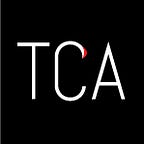Why Runways Matter More Than Ever For Startups
One of the first questions an investor asks a startup is “what’s your runway?” It’s a simple question, but it can reveal so much about the company and its founders. First and foremost, do the founders know what a runway is and can they calculate it?* An unclear answer speaks volumes about the potential inexperience of the founders.
*Runway = $$$ in the bank / monthly burn rate. The answer is how many months you have until you run out of money.
Runway and burn rate also give a glimpse into how well the startup is managing its cash. A post-seed stage burn rate of $200k can be reasonable for a SF-based tech startup but could raise eyebrows for a clothing/apparel startup that is outsourcing the majority of its manufacturing overseas.
Understand the risks of not knowing your runway
Here’s a scenario — a founder of a pre-seed stage vaccine company walks into an investor meeting. The investor asks, “So what’s your burn?” The founder flounders and says “I guess, $20k?” The investor writes a check for $240k and tells the founder to come back in 12 months.
What if the founder hadn’t done his math? What if the burn rate is closer to $25k? That cuts the runway down from 12 months to 9.5 months. And what if the founder didn’t take into account the increasing cost of blood from suppliers for the validation studies? That would bring the burn rate even closer to $30k. Now the runway is 8 months.
In this scenario, the founder realizes too late that $240k is not enough for a 12 month runway. The startup drastically cuts costs to make the money last longer, but by doing that, it completely misses key milestones that would have been critical for a robust funding round. Eventually, the money runs out and the company folds.
Know your numbers and your timeline
In the above scenario, the founder doomed the company by not fully understand the burn rate. Not only were they unaware of the exact burn rate at the time of the meeting, but they did not take into account any potential changes to the burn rate in the next 12 months.
Startups need to know their actual burn rate and the incremental effect each potential change to the company will have on the burn. This include things such as:
· Increase in supply chain costs
· Hiring personnel
· Purchasing equipment
· Licensing fees
Investors write checks expecting the money to last 12–18 months. Startups need to work backwards from this point to plan milestones and timelines. Founders have to start the process of fundraising 3 months before money runs out. Assuming a 12 month runway, this means they need to have accomplished all their planned milestones within the first 9 months.
Adjust for COVID
There’s no denying that the pandemic has changed the way startups do business and interact with investors. On a good note, investors are still writing checks despite the global turmoil. However, this is with a huge caveat — investors are in a position to dig even deeper and be even more judicious with their investments. Also, trends seem to indicate that checks are getting smaller meaning that investors are projecting shorter runways for startups with the intention of reassessing the company’s ability to meet milestones on a truncated timeline.
For startups, this means being conservative with runway and burn rate calculations. Assume worst case scenarios and build infrastructure aimed at survival. Building in buffers within runways and burn rates will give startups breathing room and flexibility as they face the uncertainty of the rest of 2020 and 2021.
#startups #entrepreneurs #healthcare #lifescience #wellness #business #consulting #venturecapital
